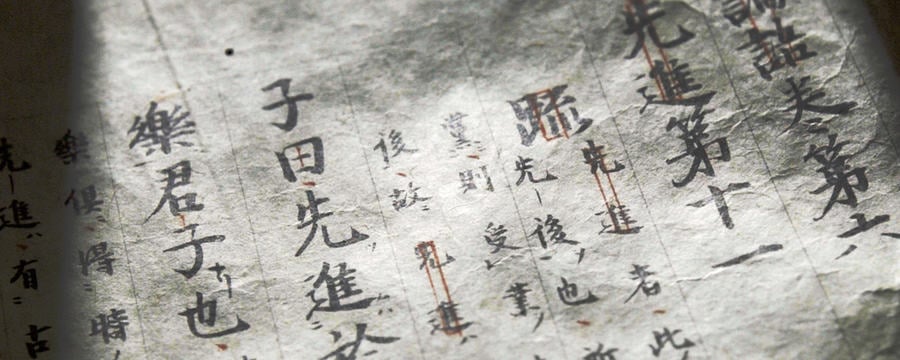Home / History / Social History / Sino-Japanese Interactions Through Rare Books / Text and commentaries of the “Tangshi xuan”
This article is from the free online
Sino-Japanese Interactions Through Rare Books


Reach your personal and professional goals
Unlock access to hundreds of expert online courses and degrees from top universities and educators to gain accredited qualifications and professional CV-building certificates.
Join over 18 million learners to launch, switch or build upon your career, all at your own pace, across a wide range of topic areas.

 Fig.1 Tangshi xuan (Selection of Tang Poems), Ming-period edition (late 16th-early 17th c.)
Fig.1 Tangshi xuan (Selection of Tang Poems), Ming-period edition (late 16th-early 17th c.)  Fig.2 Tōshi kunkai (Annotated Tōshisen), first half of the 17th c.
Fig.2 Tōshi kunkai (Annotated Tōshisen), first half of the 17th c.  Fig.3 Tangshi xuan, Kansei 4 (1792) edition
Fig.3 Tangshi xuan, Kansei 4 (1792) edition Fig.4 Tōshisen shōko, Meiwa 5 (1776) edition
Fig.4 Tōshisen shōko, Meiwa 5 (1776) edition Fig.5 Tōshisen kokujikai, [
Fig.5 Tōshisen kokujikai, [ Fig.6 Tōshisen ehon (The Illustrated Tōshisen), 35 vols., Tenmei 8 (1787) – Tenpo 7 (1836) edition
Fig.6 Tōshisen ehon (The Illustrated Tōshisen), 35 vols., Tenmei 8 (1787) – Tenpo 7 (1836) edition Fig.7 Tensho Tōshisen gogon zekku (Seal-script edition of the Five-Word per-line Quatrains in the Tōshisen), Hōreki 3 (1753) edition
Fig.7 Tensho Tōshisen gogon zekku (Seal-script edition of the Five-Word per-line Quatrains in the Tōshisen), Hōreki 3 (1753) edition Fig.8 Tensho Tōshisen shichigon zekku, Hōreki 6 (1756) edition
Fig.8 Tensho Tōshisen shichigon zekku, Hōreki 6 (1756) edition





